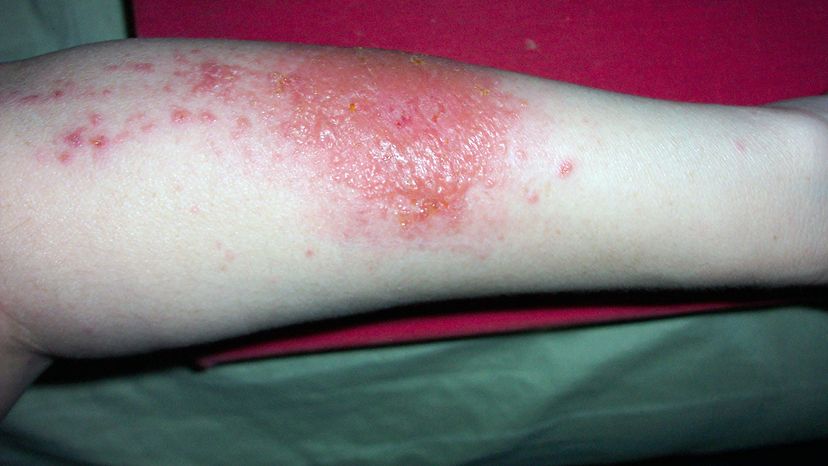Poison Ivy and the Immune System

The body's immune system is normally in the business of protecting us from bacteria, viruses and other foreign invaders that can make us sick. But when urushiol from the poison ivy plant touches the skin, it instigates an immune response, called dermatitis, to what would otherwise be a harmless substance. Hay fever is another example of this type of response; in the case of hay fever, the immune system overreacts to pollen, or another plant-produced substance.
Here's how the poison ivy response occurs: Urushiol makes its way down through the skin, where it is metabolized, or broken down. Immune cells called T lymphocytes (or T-cells) recognize the urushiol derivatives as a foreign substance, or antigen. They send out inflammatory signals called cytokines, which bring in white blood cells. Under orders from the cytokines, these white blood cells turn into macrophages. The macrophages eat foreign substances, but in doing so they also damage normal tissue, resulting in the skin inflammation that occurs with poison ivy.
Advertisement
The allergic reaction to poison ivy is known as delayed hypersensitivity. Unlike immediate hypersensitivity, which causes an allergic reaction within minutes of exposure to an antigen, delayed hypersensitivity reactions don't emerge for several hours or even days after the exposure.
Most people don't have a reaction the first time they touch poison ivy, but develop an allergic reaction after repeated exposure. Everyone has a different sensitivity, and therefore a slightly different reaction, to poison ivy. Sensitivity usually decreases with age and with repeat exposures to the plant.